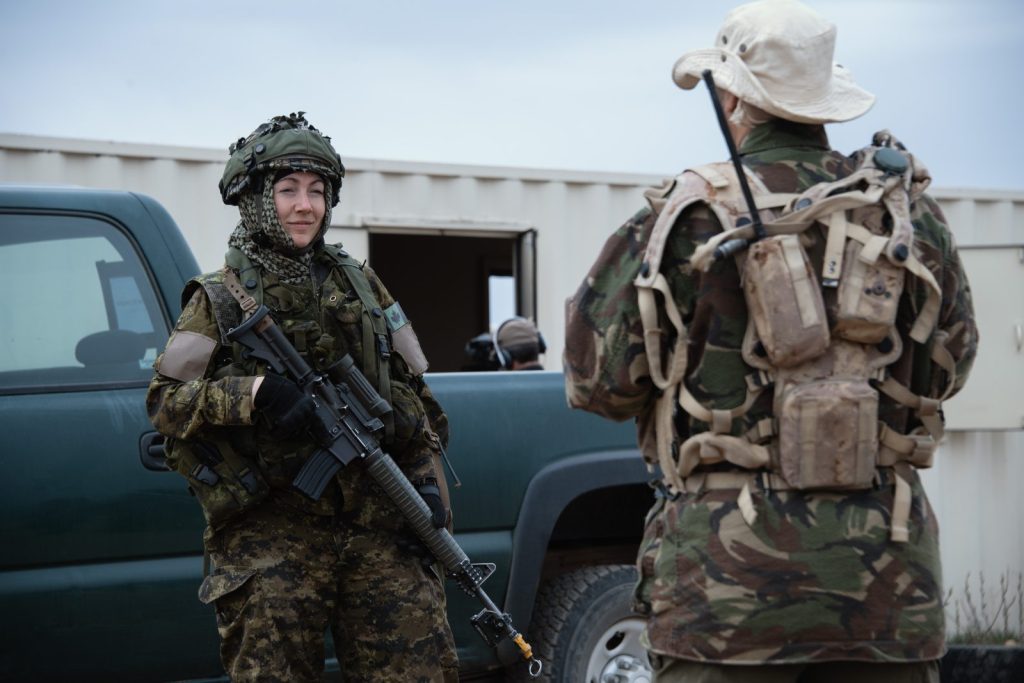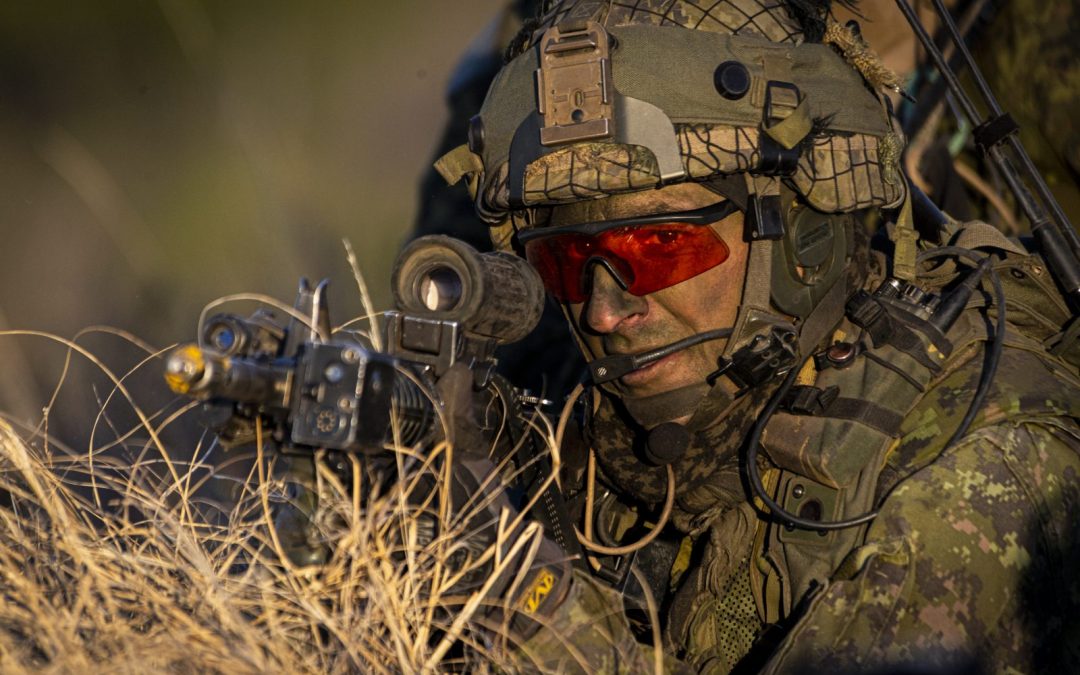What was once labeled a midlife upgrade is now a full modernization program. Over the past three years, Weapons Effects Simulation (WES) has transformed from an enhancement of the equipment the Army currently uses to capture weapons and other effects in training, to a more substantial effort to improve and expand the capability.
“The change in name was to make sure that it communicates the complete scope of the project, which is not only to update the equipment but, in many instances, will involve the full replacement of system and the procurement of increased capacity,” explained Major Jean-François Desmeules of the Directorate of Land Requirements (DLR).
WES Modernization (WSEM) might be the new moniker, but the three broad high-level mandatory requirements (HLMRs) remain the same. The first is to improve the interoperability and mobility of the simulation system by being able to connect it with ABCANZ (America, Britain, Canada, Australia, and New Zealand) armies and with NATO partners in training events both in Canada and abroad, including in operational theatres such as Latvia.
The second, focused on the training and simulation environment, aims to ensure that exercise participants can interact with their personal equipment, weapons and mobile platforms without being hampered by the WES kit, and that it produces realistic battle effects and allows for “enhanced after-action review and validation capability” to improve the overall quality and realism of the training.
The third requirement aims to increase the capacity of the current system by ensuring WES can support brigade level exercises in Wainwright, as well as training on Army force generation bases. “The Canadian Army Collective Training evolution will require more flexibility with Level 6 (Battle Group) training in other locations such as Gagetown or on operations where conditions permit,” Desmeules noted.
The HMLRs “are currently being reviewed to ensure they are in line with the Army’s evolving approach to training,” he added.
As part of its Future Integrated Training Environment concept, the Army has sought to begin interoperability discussions for training systems early in the procurement process. Interoperability is a high priority for WESM, Desmeules said. “We are primarily focused on a system that is compliant with the international Urban Combat Advanced Training Technologies standards. However, recognizing that the U.S. is a significant training partner of Canada, we will likely also require compatibility with [the U.S. Army’s multiple integrated laser engagement system (MILES)].

Photo: MS Dan Bard
The project is still refining its data requirements for a modernized WES, but the focus is on four primary categories: tactical, operational, strategic and lifecycle management. The Army “needs the WES system to validate the battle task standards and to support the decision-making process for its senior leadership on operational readiness and improvements to the training program,” he said.
The system will also be required to integrate with the virtual and constructive elements, but the project is not striving for the ability to deliver a LVC (live, virtual, constructive) training environment. However, the possibility of capitalizing on LVC development is part of the debate.
“As an example, ideally within an LVC environment, the troops would be able to train in a live simulation environment at the same time as a vehicle crew trains within a virtual simulator and other [Army] personnel are training within the constructive environment, while all are operating under the same common operational picture,” Desmeules said. “Technology, such as augmented reality, continues to advance and provides opportunities to make this concurrent activity possible.”
The current system is being used for training exercises by the battle group in Latvia, but WESM will aim to improve the scope of that portability.
“There are two WES mobile towers and a mobile exercise control that can support exercises anywhere as long as the required frequencies are deconflicted,” he said. “The soldier equipment and newer vehicle kits (MSVS and TAPV) are interoperable with our allies, but the legacy vehicle kits (LAV 6 and Leopard 2) are not.”
Like many of the Army’s major capital projects, WESM has slowed due to limited personnel in DLR and an increase in the quantity of systems now required, as well as the complexity of tasks to be completed during the options analysis (OA) phase of the procurement process. The project team is hoping to begin the definition phase by 2026 and is anticipating an initial operating capability (IOC) by 2032 or 2033.
“The WESM has built a robust schedule for the OA phase that serves as an example for other projects,” Desmeules said. “It now contains all the key activities and governance required to complete it. This process allows for a more precise schedule estimation, which pushed the IOC [date].”
When WESM was briefed to industry in April, the project team raised the possibility of multiple contracts spread over time to better incorporate technology. The team said feedback from potential vendors had identified the “advantages and limitations of different procurement strategies.”
“WESM will continue to consider the possibilities of one or multiple contracts for both acquisition and sustainment of the live simulation capability, but the driving factors are now more focused on achieving the best solution for the Army while the procurement remains competitive and fiscally sound,” they said in a statement.
The project has issued two requests for information that drew seven responding companies. A market analysis of live simulation by the Industrial and Technological Benefits Branch of Innovation, Science and Economic Development (ISED) also identified a strong vendor base, several of which would be able to provide a complete solution.
The current WES system is provided by Cubic Field Services Canada, but that contract expires this year. The project team said the system would be dormant until at least the fall of 2024.
“Considering the challenges to ramp up such a capability once the contract is awarded, it is expected that the Army will not be able to use this capability until spring 2025,” they said. “Although many plans were considered to bridge this gap, none were feasible due to resource constraints.
“Once the new contract is awarded, the [current] WES will continue to support training in Canada until WESM comes online. As well, to support exercises outside of Canada, the Canadian Manoeuvre Training Centre is working on a separate services contract which will deliver an interoperable system with our allies.”



Simulation…waste of time and effort…Train with the real thing…live ammo…SAS , Navy Seals and the Canadian Airborne Regiment when I was with them trained that way. Cheaper and gets the job done